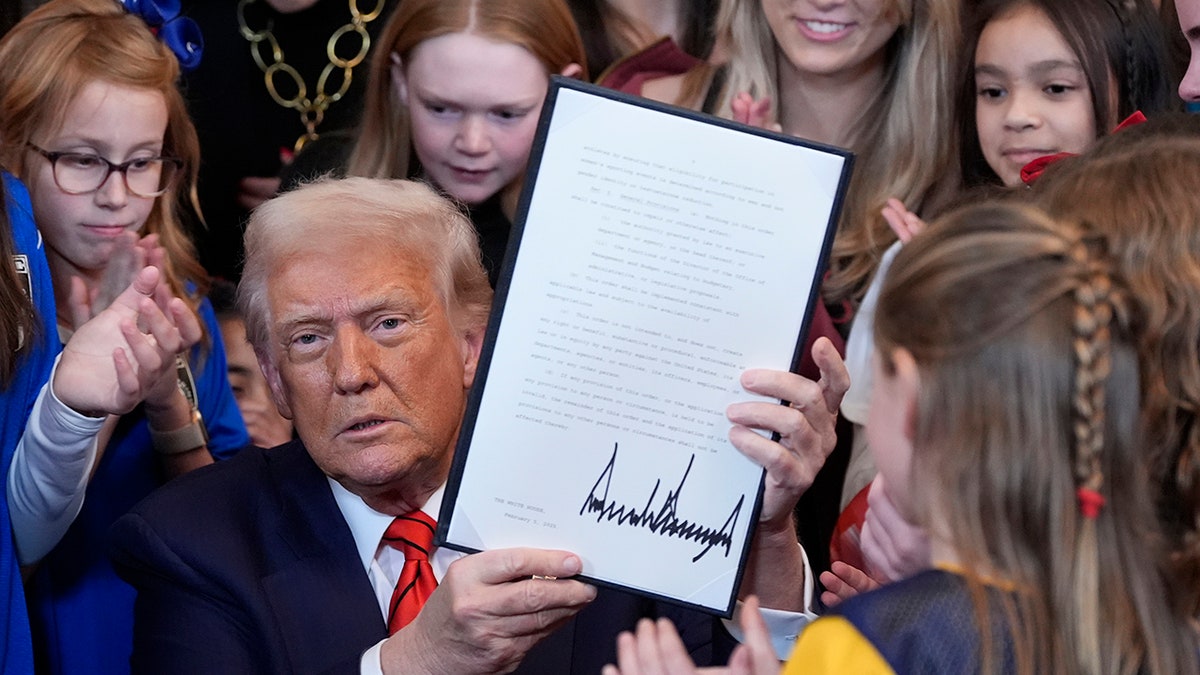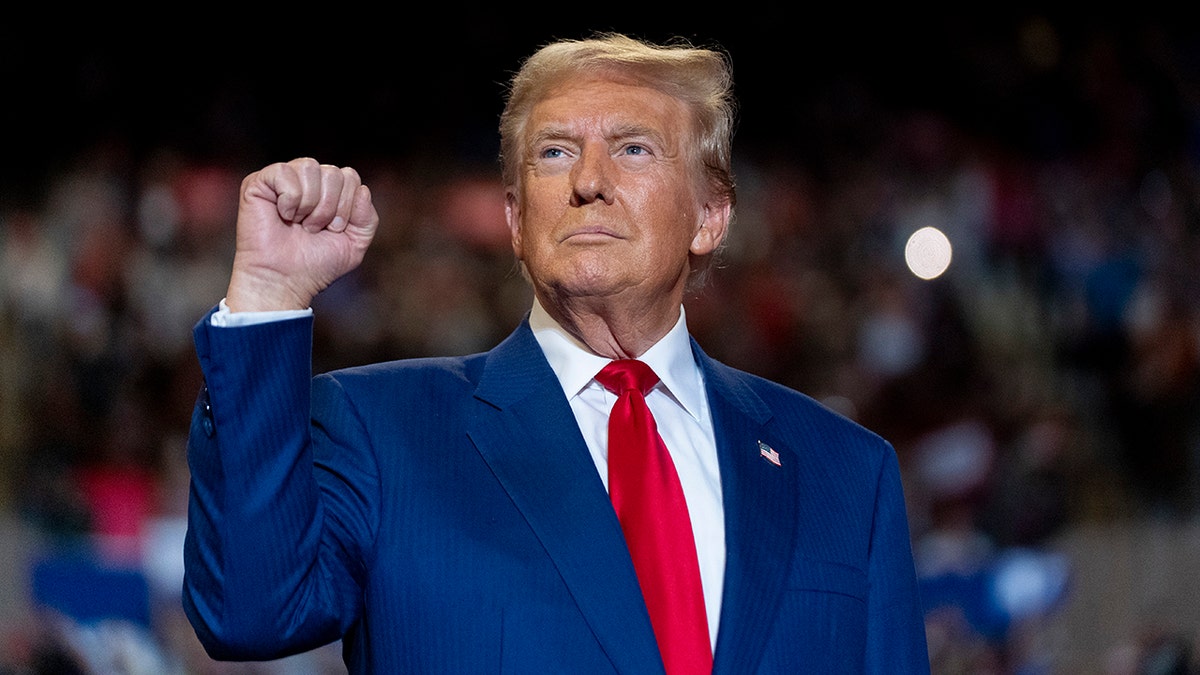Trump Segregated Facilities - Examining The Details
When we consider the public life of a former leader, many things come into view. We often think about the places where significant events happen, and the people who are there. It's a way, you know, of understanding the broader picture of an administration. We might look at how different groups interact with these spaces and the policies that shape those interactions.
There is, you see, a good bit of talk about how a president's actions can affect various groups of people and their experiences in different settings. It's about, more or less, how policies and decisions play out in the everyday life of a nation. So, when we think about what a leader does, we often consider the places involved and the individuals who gather there.
This exploration aims to look at some of the situations and locations connected to a past presidency, drawing from specific mentions in public records. We'll examine the different groups mentioned and their connections to various sites, and perhaps, just a little, consider the wider implications of those connections, without adding outside information.
Table of Contents
- Looking at Public Spaces and Leadership
- Who Attended Key Gatherings?
- Are There Different Rules for Different Groups?
- What About Global Locations?
- How Do Policies Shape Access to Places?
- A Look at Legislative Efforts
Looking at Public Spaces and Leadership
A former president, as a matter of fact, often finds themselves in the spotlight, with their actions and appearances drawing much notice. One such moment involved an event held at a well-known public building, the White House. This particular gathering, you know, was a celebration to mark Black History Month, a time set aside to honor the achievements and contributions of African Americans. It's interesting to consider, in a way, how such a place becomes a setting for different community celebrations.
The White House, typically, serves as a central point for national conversations and events. For instance, the administration made it a point to commemorate Black History Month there. This kind of event, you know, brings together people from a specific community to a prominent national building. It’s a space, so, where different parts of the population gather for various reasons, and it’s worth noting who is present at these occasions.
Who Attended Key Gatherings?
At the Black History Month event held at the White House, there were some notable individuals present. For example, the well-known golfer, Tiger Woods, was there. Also, a senator, Tillis, was present. It’s always interesting, isn't it, to see who appears at these types of functions, as it can, in some respects, give a sense of the diverse individuals who connect with a presidential administration.
These gatherings, you know, tend to bring together a mix of public figures and community members. The presence of someone like Tiger Woods, for instance, adds a certain level of public interest. The attendance of political figures, like Senator Tillis, also highlights the political connections. So, it's about seeing which people are welcomed into these spaces, and for what reasons, which can, in a way, show the breadth of a leader's interactions.
Are There Different Rules for Different Groups?
When we think about how different groups are treated, or how they interact with official processes, there are instances that come to mind. For example, there was a situation where the administration asked the country's highest court, the Supreme Court, to allow the removal of several people who had come from South Sudan. This was, as a matter of fact, about their status to remain in the country. This action, you know, really shows how governmental decisions can affect specific groups of people and their ability to stay in a place.
The legal system, particularly, plays a big part in determining who can be in a certain place. Decisions about immigration, for instance, can mean that different groups face different pathways or outcomes. This instance with the individuals from South Sudan, you see, highlights how laws and court rulings can, in some respects, create different rules for different populations regarding their presence within national borders. It's about, more or less, the procedures that guide who stays and who goes.
What About Global Locations?
A president's actions, naturally, aren't just limited to national soil. There are, actually, many instances where decisions affect places and people far away. For example, there were reports about missile attacks on a United States air base located in Al Udeid. This base, you know, is a significant military facility abroad, and it highlights the reach of global events and the involvement of a country's leadership in international settings.
These international sites, really, represent a country's presence and influence around the globe. The incident at the Al Udeid air base, you know, showed how a government responds to events in places far from home. It's about, arguably, the protection of national interests and personnel in various locations. So, the security of these foreign facilities is, typically, a major concern for any administration.
Considering Military Spots
Military installations, for instance, are very specific kinds of places, often with very strict rules and purposes. The Al Udeid air base, as I was saying, is one such spot. When there was a missile attack there, the administration was quick to point out that no American personnel were harmed. This focus, you know, is usually on the well-being of the people stationed at these important sites.
These military areas, generally, are critical for national defense and global operations. The fact that there were no casualties at Al Udeid, in fact, was a key point for the administration to share. It shows, in a way, the importance placed on the safety of individuals working in these sensitive, controlled environments, and how information about them is conveyed to the public.
Nuclear Sites and Their Purpose
Beyond military bases, there are other highly sensitive locations, like nuclear facilities. There were reports, for example, about airstrikes targeting sites such as Fordow, Natanz, and Isfahan, which are known nuclear facilities. These places, you know, are incredibly important due to their strategic nature and the materials they contain.
The mention of these nuclear locations, in fact, points to the broader geopolitical landscape. These facilities, actually, are central to discussions about international security and national power. The actions taken regarding them, you know, are typically very carefully considered, given their significant role in global affairs and the potential for wider impact.
How Do Policies Shape Access to Places?
Government policies, basically, can have a real impact on how different groups experience or interact with various places and systems. Consider, for example, the administration's stance on trade, particularly its tariff strategy. A leading economist, you know, even acknowledged that this approach might have been more clever than some critics initially thought. This kind of policy, you see, can create different economic conditions for various industries and, in a way, shape their access to markets.
Economic policies, really, have a way of influencing who benefits and who faces challenges. A tariff strategy, for instance, can change the flow of goods and money, which in turn affects businesses and individuals differently. It's about, arguably, how economic decisions can create different pathways or restrictions for various parts of the economy, shaping their engagement with global markets.
A Look at Legislative Efforts
Legislation, too, is a powerful tool that shapes how things work in a country, affecting different groups and their access to resources. There was, for example, a major piece of legislation referred to as the 'one, big, beautiful bill.' This bill, you know, passed in the Senate after a very long time, promising things like tax relief and border security. It was seen, in fact, as a big victory for the American people, pushed by House Republicans under the president's guidance.
This kind of legislative effort, you know, is meant to bring about widespread changes that touch many aspects of life. A bill that promises tax relief, for instance, could affect nearly every household's finances. And measures related to border security, obviously, have a direct bearing on who can enter a country and how. So, these legislative actions, typically, aim to reshape systems and, in a way, influence the experiences of various groups within the nation.

In the aftermath of rally shooting, Trump suggests God saved his life

UPenn Title IX violations: Trump DOE makes demands for school's

Big Oil breaks with Trump on potential second withdrawal from Paris